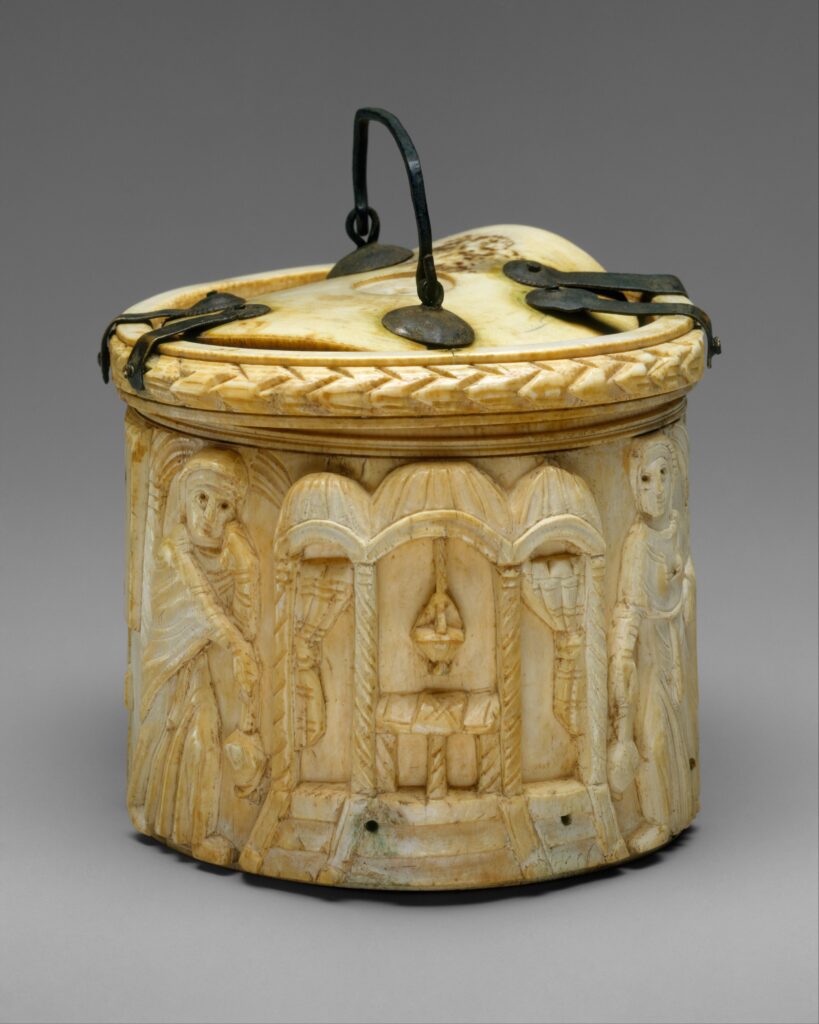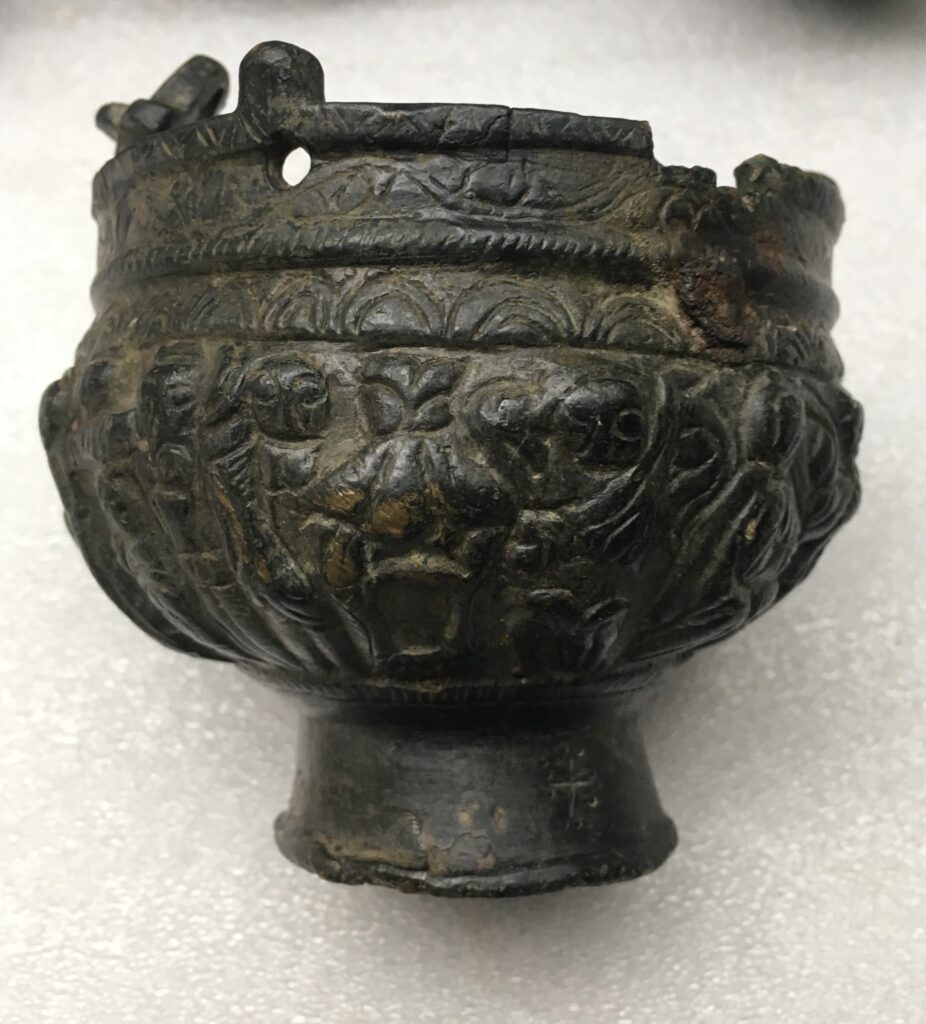As a guest at the Global Horizons Project, I spent an important part of my stay working on Late Antique Christian initiation. My ambition was to touch one of the neglected questions linked to initiatory rituals: the use of “objects” during baptism. This is a hard task: we do not have any evidence of such practices in written sources. On the other hand, we know for sure that the bodies of neophytes were ointed, their names inscribed to be read before the ritual, and that they received new white garments. To make it simple: the ritual of baptism was certainly accompanied by objects devoted to its practical, but also metaphorical, acts. How to deal with such a dichotomy?

The hypothesis I started to work with, in collaboration with my research team, is that these objects may have been exceptional both in their material features and their layout. Such an idea was justified by the recurrent presence of certain compositions – e.g., the Women at the Sepulcher – on a large number of objects which may have served as containers or as supports for scripture. I have been examining two groups of objects: the first group are ivory pyxides spread all around the world in museum collections [fig. 1]. Never analyzed from the chemical point of view, they were in the following centuries used for containing oils and incense. This idea is supported also by Late Antique representations of such containers. As such, their possible use during baptism seems plausible. This seems confirmed by the circular compositions reminding of the monumental decorations typical for initiatory spaces [fig. 2]. The same can be said about the second group: ivory diptychs.

It was with these premises in mind that I visited, together with my colleague Adrien Palladino, the collection of the Musée de Valère in Sion, where one of the most impressive Late Antique pyxides is preserved. Its entire decoration is devoted to the representation of the Women at the Sepulcher [fig. 3]. Unfortunately, we couldn’t touch the object and explore its interior. We discussed, however, how strongly this object might have been linked with the notion of death and resurrection. As recently demonstrated by Ally Kateusz, it is highly plausible that initiatory rituals were, up to the 4th century, administrated mainly by women. This was due to the fact that funerary rites were “women territory”, and that the traditional interpretation of baptism was precisely that of a ritual death followed by a resurrection into the new community. In this sense, the visual concept of the Sion pyxis seems to perfectly fit with this general framework. Very interestingly, the women on the pyxis are holding in their hands carefully rendered censers. These were linked with the cult of the dead. More interestingly, we know that incense was also widely used during initiatory rituals.

And now the funny point: while staying in Bern, I happened to discuss censers many times with Beate on which she was writing a book chapter. Probably executed in the Holy Land, the latter were linked to the pilgrimage to the Holy Sepulcher, but also to healing rituals. More interestingly, the iconography of these censers – generally dated from the 6th to the 12th centuries – is astonishingly similar to that on the pyxides. For instance, in some cases the Women at the Sepulcher appear on them [fig. 4]. This opened a conversation between Beate and myself about the actual function of these objects. Her arguments are perfectly fitting with my initial interpretation. The obsession, mentioned in the title of this short post, became a way of proposing parallel object stories. The fact that censers are represented on pyxides makes an intersection of the functions of censers and pyxides in the baptismal ritual highly plausible. The same object may have experienced, during its “life”, several functions. While changing functions over time, it may have maintained an essential identity thanks to the representation of death and resurrection on it. But this is only the beginning of a story, which I hope will continue, and be taken up next during a public conversation in Brno this Autumn…
